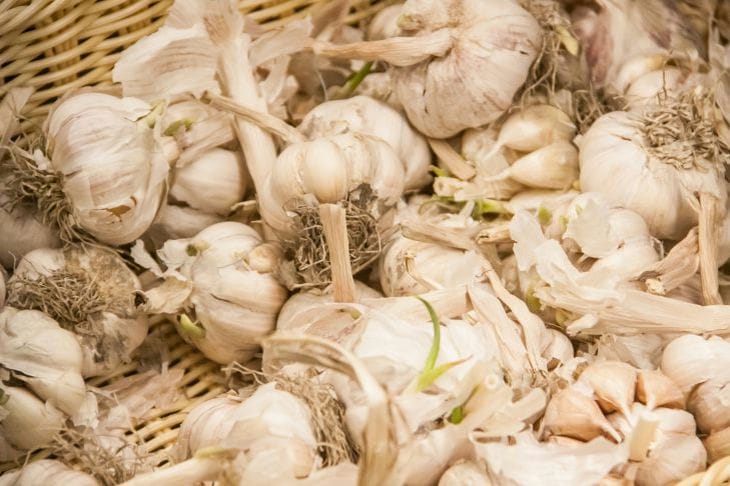- Causes of yellowing garlic
- Nitrogen fertilizers for green mass
- Potassium-phosphorus fertilizers for head formation
- Organic fertilizer for garlic
- Microelements for full development
- Foliar dressings for quick effect
- Timing and frequency of feeding
- Features of fertilizing winter and spring garlic
- Disease prevention through proper nutrition
How to feed garlic so that it does not turn yellow and grows large: secrets of a rich harvest revealed
Growing large and healthy garlic requires diligence and knowledge of the intricacies of care from the gardener.
One of the problems is yellowing of leaves and formation of small heads.
There are proven feeding methods that will help prevent yellowing and stimulate the growth of large, juicy heads of garlic.
Causes of yellowing garlic
To feed garlic, it is important to understand the reasons for its yellowing. Usually, this occurs due to a lack of nitrogen, which is responsible for the growth of green mass, or excess moisture, diseases or pests.
Correct diagnostics will help to choose the appropriate feeding method.

Nitrogen fertilizers for green mass
To prevent yellowing of garlic leaves, it is necessary to provide the plant with sufficient nitrogen.
The first nitrogen fertilization is recommended to be carried out in early spring, as soon as active growth of greenery begins. For this purpose, you can use ammonium nitrate or urea dissolved in water.
It is important not to overdo it with nitrogen, as too much can lead to excessive leaf growth at the expense of head formation.
Potassium-phosphorus fertilizers for head formation
Potassium and phosphorus are necessary for the formation of large heads of garlic. These elements promote the development of the root system and the accumulation of nutrients in the bulb.
Top dressing with potassium-phosphorus fertilizers should be carried out during the period of head formation, approximately a month before harvesting.
An excellent option is to use wood ash, rich in potassium and microelements.
Organic fertilizer for garlic
Many gardeners prefer to use organic fertilizers, which not only nourish the plant, but also improve the structure of the soil.
Infusion of mullein or chicken manure, compost or humus are excellent sources of nutrients for garlic. It is better to apply organic matter under the root, avoiding contact with the leaves to prevent burns.
Microelements for full development
For the full development of garlic, not only the main nutrients are necessary, but also microelements. Boron, manganese, zinc and copper play an important role in the metabolism of the plant and the formation of large heads.
Complex fertilizers with microelements or specialized preparations for bulbous crops will help provide garlic with everything it needs.
Foliar dressings for quick effect
In case of obvious signs of nutrient deficiency, an effective method is foliar feeding – spraying the leaves with a fertilizer solution. This method allows for quick delivery of nutrients to the plant.
Complex fertilizers with microelements in chelated form, which are easily absorbed through the leaves, are well suited for foliar feeding.
Timing and frequency of feeding
The right timing for fertilizing garlic is crucial. The first fertilizing is done in early spring, as soon as active growth begins. The second – during the period of bulb formation, about a month before harvesting.
If necessary, additional feeding can be carried out between these main stages, based on the condition of the plants.
Features of fertilizing winter and spring garlic
It should be taken into account that winter and spring garlic have different nutritional needs.
Winter garlic planted in the fall requires early spring nitrogen fertilization for active growth. Spring garlic planted in the spring requires more balanced nutrition from the very beginning of growth.
Disease prevention through proper nutrition
Balanced nutrition of garlic promotes the formation of large heads and increases plant resistance to diseases.
Potassium and microelements strengthen the plant's immunity, making it less susceptible to fungal and bacterial infections. Healthy, well-fed garlic maintains the green color of its leaves.
Previously we talked about how to get rid of annoying ants .
